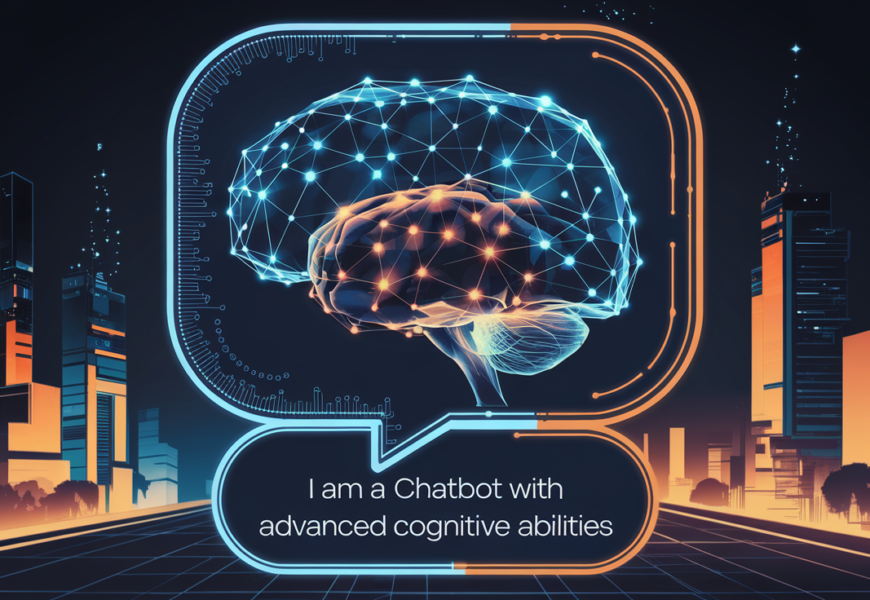NLP in customer service is revolutionizing the way chatbots operate, offering 24/7 support that understands and addresses your needs with personalized solutions. Imagine a world where customer service is always available and perfectly tailored to your inquiries—well, that world is here! Thanks to groundbreaking advancements in Natural Language Processing (NLP), customer service chatbots are experiencing a dramatic transformation. Recent studies show that 83% of customers expect immediate interaction when contacting a company, and NLP-powered chatbots are stepping up to meet this demand. In this article, we’ll delve into the exciting world of NLP chatbots and explore how they’re reshaping the landscape of customer service. Get ready to discover the future of AI-powered support!
What is an NLP Chatbot and How Does it Work?
Before we delve into the revolutionary impact of NLP on customer service, let’s first understand what an NLP chatbot is and how it works. Natural Language Processing chatbots are software programs that can understand and respond to human speech in a natural, human-like way. Unlike their rule-based counterparts, NLP-powered bots use artificial intelligence to mimic person-to-person conversations, making interactions more intuitive and efficient. At its core, an NLP chatbot combines several key components:
- Natural Language Understanding (NLU): This component helps the chatbot interpret the user’s input, identifying the intent and extracting relevant information.
- Natural Language Generation (NLG): This is responsible for formulating appropriate responses based on the understood intent and context.
- Machine Learning: This allows the chatbot to improve its performance over time by learning from interactions and feedback.
- Dialog Management: This component manages the flow of conversation, ensuring coherence and context preservation throughout the interaction.
The magic of NLP lies in its ability to process and understand human language in all its complexity, including idioms, colloquialisms, and even typos. This is a significant leap from traditional rule-based chatbots, which rely on predefined scripts and keyword matching. For example, consider these two user inputs:
- “I want to cancel my subscription.”
- “I’m thinking about ending my membership.”
While a rule-based chatbot might only recognize the first input if it’s programmed to look for the word “cancel,” an NLP chatbot would understand that both statements express the same intent. This level of understanding allows NLP chatbots to provide more accurate and helpful responses, significantly improving the customer experience.
The Benefits of NLP Chatbots in Customer Service
Now that we understand what NLP chatbots are, let’s explore the game-changing benefits they bring to customer service:
1. Improved Customer Experience through Personalized Interactions
NLP chatbots can analyze a customer’s language, tone, and previous interactions to tailor their responses accordingly. This personalization makes customers feel understood and valued, leading to higher satisfaction rates. For instance, if a customer has previously inquired about a specific product, the chatbot can remember this and provide relevant information in future interactions.
2. 24/7 Availability and Instant Response Times
In today’s fast-paced world, customers expect immediate responses. NLP chatbots deliver on this expectation by providing round-the-clock support without breaks or holidays. This constant availability can significantly reduce customer frustration and improve overall satisfaction.
3. Ability to Handle Complex Queries and Understand Context
Unlike rule-based chatbots, NLP-powered bots can understand and respond to complex, multi-part queries. They can also maintain context throughout a conversation, making interactions feel more natural and human-like. For example, if a customer asks, “What’s the return policy for the red shoes I bought last week?” the chatbot can understand and process multiple pieces of information: the inquiry about the return policy, the specific product (red shoes), and the time frame (last week).
4. Scalability and Cost-effectiveness for Businesses
NLP chatbots can handle multiple conversations simultaneously, allowing businesses to scale their customer service operations without proportionally increasing costs. This scalability is particularly beneficial during peak periods or for businesses experiencing rapid growth.
5. Continuous Learning and Improvement through AI
One of the most exciting aspects of NLP chatbots is their ability to learn and improve over time. As they interact with more customers and encounter a wider range of queries, they become more adept at understanding and responding to customer needs. This continuous improvement ensures that the quality of customer service keeps getting better.
Real-World Applications of NLP Chatbots in Customer Service
The applications of NLP chatbots in customer service are vast and varied. Let’s explore some of the most impactful use cases:
1. Answering Frequently Asked Questions
This is perhaps the most common application of NLP chatbots. By handling routine inquiries, chatbots free up human agents to focus on more complex issues. For example, a telecom company’s chatbot might answer questions about plan details, billing cycles, or troubleshooting common device issues.
2. Handling Customer Complaints and Issue Resolution
NLP chatbots can understand the nature of a complaint, provide immediate solutions for simple issues, and escalate complex problems to human agents when necessary. For instance, an e-commerce chatbot might handle a complaint about a delayed shipment by providing tracking information and offering compensation if applicable.
3. Providing Product Recommendations and Support
By analyzing a customer’s preferences and purchase history, NLP chatbots can offer personalized product recommendations. They can also provide detailed product information and comparisons to help customers make informed decisions. A fashion retailer’s chatbot, for example, might suggest outfits based on a customer’s style preferences and previous purchases.
4. Assisting with Booking and Reservation Processes
In industries like travel and hospitality, NLP chatbots can streamline the booking process. They can understand complex requests, check availability, and complete reservations. For instance, a hotel chatbot might help a customer book a room, add special requests, and provide information about amenities and local attractions.
5. Gathering Customer Feedback and Insights
NLP chatbots can conduct surveys and collect feedback in a conversational manner, making the process more engaging for customers. They can also analyze this feedback in real-time, providing valuable insights to businesses. For example, a restaurant chain’s chatbot might ask customers about their dining experience and use sentiment analysis to gauge overall satisfaction levels.
Implementing NLP Chatbots: Best Practices and Considerations
While the benefits of NLP chatbots are clear, implementing them effectively requires careful planning and consideration. Here are some best practices to keep in mind:
1. Choosing the Right NLP Platform for Your Business Needs
There are numerous NLP platforms available, each with its strengths and specializations. Some popular options include Google’s Dialogflow, IBM Watson, and Microsoft’s Bot Framework. When choosing a platform, consider factors such as:
- The complexity of your use case
- Integration capabilities with your existing systems
- Scalability and performance
- Pricing models
- Available languages and multicultural support
2. Integration with Existing Customer Service Systems
For seamless operation, your NLP chatbot should integrate well with your existing customer service infrastructure. This includes your CRM system, knowledge base, and any other tools your customer service team uses. Proper integration ensures that the chatbot has access to all necessary information and can provide consistent, accurate responses.
3. Training and Fine-tuning NLP Models for Specific Industries
While NLP models come with general language understanding capabilities, they need to be trained on industry-specific terminology and use cases to perform optimally. This involves feeding the model with relevant data, including:
- Frequently asked questions and their answers
- Common customer issues and resolutions
- Product information and specifications
- Company policies and procedures
The more quality data you provide, the better your chatbot will perform.
4. Ensuring Data Privacy and Security
As chatbots handle sensitive customer information, ensuring data privacy and security is paramount. This involves:
- Implementing strong encryption for data in transit and at rest
- Complying with relevant data protection regulations (e.g., GDPR, CCPA)
- Providing clear information to customers about how their data is used
- Implementing secure authentication mechanisms
5. Balancing Automation with Human Touch
While NLP chatbots can handle a wide range of queries, it’s important to have a smooth handover process to human agents for complex issues or when customers express a preference for human interaction. This ensures that customers always have access to the level of support they need.
The Future of NLP Chatbots: Trends and Predictions for 2024 and Beyond
As we look to the future, the potential of NLP chatbots in customer service seems boundless. Here are some exciting trends and predictions:
1. Advancements in Natural Language Understanding and Generation
We can expect NLP models to become even more sophisticated, with improved ability to understand context, detect subtle nuances in language, and generate more natural, human-like responses. This will lead to even more seamless and satisfying customer interactions.
2. Integration with Other AI Technologies
NLP chatbots will likely be integrated with other AI technologies to provide more comprehensive support. For example:
- Computer vision could allow chatbots to understand and respond to images or videos shared by customers.
- Advanced sentiment analysis could help chatbots better understand and respond to customers’ emotional states.
- Predictive analytics could enable chatbots to anticipate customer needs and offer proactive support.
3. Multilingual and Multicultural Support Capabilities
As businesses continue to expand globally, NLP chatbots will need to support multiple languages and understand cultural nuances. We can expect significant advancements in this area, allowing chatbots to provide culturally appropriate and linguistically accurate support across diverse customer bases.
4. Emotional Intelligence and Empathy in Chatbot Interactions
Future NLP chatbots will likely have improved emotional intelligence, allowing them to recognize and respond appropriately to customers’ emotions. This could involve adjusting their tone, offering reassurance, or escalating to a human agent when detecting high levels of frustration or distress.
5. Predictive Customer Service and Proactive Problem-solving
Rather than just reacting to customer queries, future NLP chatbots may be able to predict potential issues based on customer data and proactively offer solutions. For instance, an internet service provider’s chatbot might detect patterns indicating an impending service disruption and proactively inform affected customers, providing updates and alternative solutions.
Conclusion
The revolution is here, and it’s powered by NLP! As we’ve explored in this article, Natural Language Processing is transforming customer service chatbots into intelligent, efficient, and personalized support systems. By embracing this technology, businesses can not only improve customer satisfaction but also streamline their operations and gain valuable insights. From handling complex queries and providing 24/7 support to offering personalized recommendations and gathering customer feedback, NLP chatbots are reshaping the customer service landscape.
As the technology continues to evolve, we can expect even more exciting developments in the realms of emotional intelligence, predictive support, and multicultural understanding. Are you ready to take your customer service to the next level? It’s time to harness the power of NLP chatbots and join the AI-powered support revolution. The future of customer service is here – don’t get left behind! Remember, while NLP chatbots offer tremendous benefits, they should complement rather than replace human agents.
The goal is to create a harmonious blend of AI efficiency and human empathy, providing customers with the best possible support experience. As we move forward into 2024 and beyond, one thing is clear: NLP chatbots will continue to play an increasingly crucial role in customer service. By staying informed about the latest developments and best practices in this field, businesses can ensure they’re well-positioned to meet the evolving expectations of their customers in this exciting new era of AI-powered support. So, are you ready to revolutionize your customer service with NLP chatbots? The future is calling – it’s time to answer!

















